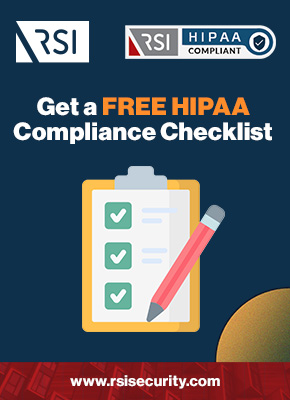Achieving and maintaining compliance with the Health Insurance Portability and Accountability Act, commonly referred to as HIPAA, is essential for the long-term success of covered entities. HIPAA is a law with both a wide scope and a robust enforcement apparatus. In this article, well outline some of the top benefits that come with maintaining compliance with HIPAA law.
With each year, maintaining compliance becomes even more of a priority for covered entities. As the rate of data breaches and the scope of their potential impact increases, so too does the need to make HIPAA compliance a cornerstone of your patient data security risk management strategy.
Also Read: Top 5 Components of HIPAA Privacy Rule
A data breach or other violation of HIPAA security regulations can result in required remediation, monetary penalties, reputation harm, and loss of patient confidence. Each of these consequences of noncompliance can have a profound effect on the future success of a covered entity or business associate. As such, it is vital to understand and minimize your risk of noncompliance through a comprehensive patient data security risk management solution.
What is HIPAA?
HIPAA became law in 1996 and has continued to grow in both scope and enforcement over time. Despite the lengthy presence of HIPAA, many people lack an understanding of what HIPAA was, what HIPAA has become, and how those changes affect covered entities. The current HIPAA law as it exists today is the HIPAA Omnibus Rule, passed in 2013. The full text for the HIPAA Omnibus Rule can be found here. The Omnibus Rule represents the codification of a number of different modifications to the original HIPAA law. In the years following HIPAAs adoption into law, it became clear that HIPAA as it was originally written, lacked the scope and enforcement capabilities necessary for proper implementation. This was addressed through a series of Rules which, over time, significantly bolstered both the requirements set forth by HIPAA and the enforcement apparatus to deal with noncompliance.
At its core, HIPAA was used to create a regulatory structure that would safeguard the handling, storage, and transmission of patient health information. A second central objective of HIPAA was to empower patients with greater control over their health information and medical records by allowing them to request their medical records and requires covered entities to comply with those requests. Additionally, HIPAA ensured that patient health information was portable, such as when a person moved between employer-provided health plans during a job or career change. It is important to note that while some health care benefits are covered under the law, some hipaa excepted benefits may not be covered under the same portability rules.
Over time, the language, scope, and requirements set forth in HIPAA have expanded to incorporate technologies and the risk they bring to patient data security. For example, the ever-present risk of data security breaches has continued to elevate since HIPAA was first created. The Breach Notification Rule was implemented to incorporate reporting mechanisms and requirements in situations where a breach has occurred. With the increasing integration of technology into the healthcare environment, risks of HIPAA violations only continue to increase. The pace of change results in an environment characterized by ever-present risk. This highlights the need for a robust patient data protection framework that ensures HIPAA compliance in all areas, and all levels, of covered entity organizations. If you would like more information about the background of HIPAA, check out our blog post What is HIPAA?
HIPAA Compliance Benefits
Achieving and maintaining HIPAA compliance isn’t just recommended. If you are a covered entity or associated business, you are required to be compliant with both the HIPAA Privacy Rule and HIPAA Security Rule. That being said, finding HIPAA compliance solutions will take some research. Although it is a legal requirement, being hipaa compliant can be beneficial for a number of reasons. At its core, to comply with HIPAA ensures that your patient data security management systems are in place and optimized for todays level of risk. By adhering to the requirements for HIPAA compliance, your organization will ensure that key avenues of risk are minimized.
Patient Data Handling Best Practices
Maintaining HIPAA compliance means ensuring that your handling of sensitive data is appropriate throughout your organization. Specifically, how your protected health information (PHI) and electronic protected health information (ePHI) is accessed, stored, transmitted, and shared has a significant impact on the level of risk for a breach or incident of noncompliance. Achieving and maintaining HIPAA compliance requires assessing how PHI is moving through your systems, including knowing exactly where it is going and who has access to it along the way. The requirements set forth in HIPAA support a wide range of data security best practices that dont necessarily have to do with PHI. Rather, by implementing HIPAA compliance protocols, this ensures that all of your sensitive data is secured and protected. With todays landscape of active and persistent threats, data security best practices provide an essential level of defense through system-wide vigilance towards data protection and security.
Patient Trust
Large-scale data breaches like those seen in recent years continue to occur at an alarming rate. These can lead to substantial reputational harm that can result in lasting damage. Maintaining patient trust over time requires also maintaining HIPAA compliance and a robust data security infrastructure focused on protecting patient data. One of the top benefits of hipaa compliance is the ability to reduce the risk of a data breach. Additionally, in the event a breach occurs it is likely to be less damaging. With a comprehensive data protection plan in place, external intrusions like data breaches are more likely to be noticed sooner rather than later, minimizing the scope of the breach and limiting the impact on your brand and reputation.
Proactive Data Protection
Implementing a comprehensive patient data security risk management strategy that maintains HIPAA compliance allows your organization to proactively protect your sensitive systems and data against current risks. At the same time, an intelligent data protection plan will also enable your organization to quickly adapt to new threats on the market. As new technologies are being introduced at a seemingly blinding pace, it can be daunting to protect not only against todays threats, but tomorrow’s as well. The first step towards protecting against cyber threats in the future is to implement a comprehensive data protection plan. This lays the groundwork for protecting your systems against future threats by making everyone in your organization data security minded, while also ensuring you have active threat measures and tight access controls in place. This will give you the ability to quickly incorporate new strategies for defending against tomorrow’s threats, rather than being caught off guard by ever-changing active persistent threats. The heightened cybersecurity posture that comes with compliance is one of the top hipaa benefits for covered entities.
Ongoing Profitability
Perhaps the single greatest advantage of achieving and maintaining HIPAA compliance is the security in knowing you wont be subject to corrective action over HIPAA noncompliance. Corrective action can take a number of forms, but each can have a significant monetary cost associated with them. Even voluntary compliance efforts can result in high costs, due to the effort required to change your systems or processes to be compliant. Corrective action has associated costs far beyond simply a loss of business from negative patient security. Extensive training and retraining may be needed for your staff. Noncompliance that involves data storage, security, or transmission may require a system-wide overhaul to bring you up to compliance. Each instance of noncompliance is different, making it difficult to accurately assess your liability for future noncompliance. Suffice it to say that any form of noncompliance will have a negative impact on your profitability. Large data breaches or instances where multiple violations occurred can result in significant monetary penalties alongside costs associated with bringing your systems and processes up to compliance. This highlights the fact that maintaining HIPAA compliance is essential to ensuring your organizations ongoing profitability.

Consequences for Noncompliance
HIPAA compliance is maintained through two primary methods. Compliance reviews represent one method, when outsiders file a complaint it represent an alternative method. HIPAA compliance oversight is conducted by the U.S. Department of Health and Human Services Office of Civil Rights (OCR). In order to ensure compliance, OCR can perform a compliance review on your organization to ensure you are adhering to the HIPAA Privacy Rule and Security Rule. What happens if you violate HIPAA? If violations exist, your organization may require corrective action, which can include voluntary efforts to bring your organization up to compliance, corrective action, or a binding resolution agreement. Additionally, OCR has the ability to penalize organizations for noncompliance through civil money penalties (CMP), which can be substantial. Fines for noncompliance can be substantial, particularly in situations where gross negligence or willful negligence is found.
The existing penalties for HIPAA compliance and the process through which OCR oversees and maintains compliance are relatively new. When HIPAA was first implemented no structures or regulatory body existed that was adequate to provide oversight and enforcement of the law. The incorporation of the Enforcement Rule into the HIPAA Omnibus provided the process and structure necessary for enforcement. The Enforcement Rule was implemented alongside more detailed requirements in the Privacy and Security Rules. Taken as a whole, HIPAA today has significantly more teeth than HIPAA as it was first implemented.
Many covered entities and business associates may be unaware of how quickly the oversight and enforcement of HIPAA have accelerated since the passing of the HIPAA Omnibus Rule in 2013. A quick look at OCRs press releases over the preceding year, found here, highlights the aggressive nature of OCRs enforcement and oversight efforts. With fines topping $5 million dollars, instances of noncompliance can be costly. For smaller business associates that are still governed by HIPAA law, fines and penalties can be directly tied to the success or failure of your business. Additionally, even businesses that close as a result of monetary penalties levied by the OCR are still found financially liable for their fines, as was the case with Filefax in 2016. Filefax was found to be improperly handling and storing PHI, as well as allowing unauthorized access to patient records. OCRs investigation and penalties eventually led to Filefax shutting down, but the liability for civil money penalties imposed by OCR remained.
Final Thoughts on HIPAA Compliance
 HIPAA compliance is not voluntary for covered entities and business associates that handle sensitive patient health information. As the penalties for noncompliance demonstrate, the best course of action for entities required by law to adhere to HIPAA regulations is to be proactive in their data security infrastructure.
HIPAA compliance is not voluntary for covered entities and business associates that handle sensitive patient health information. As the penalties for noncompliance demonstrate, the best course of action for entities required by law to adhere to HIPAA regulations is to be proactive in their data security infrastructure.
The reality is that many organizations in the healthcare industry rely on outdated systems, infrastructure, and processes that no longer provide adequate protection against active and persistent threats seen today. At the same time, HIPAA compliance is about more than simply securing data. Although ePHI plays a central role in todays health care landscape, physical records of sensitive patient information are still in wide use and need adequate protection as well. Securing both PHI and ePHI is not only necessary to maintain HIPAA compliance, but is of the utmost importance to ensure that your patients sensitive health information is protected from illegal access.
One of the primary benefits of being HIPAA compliant is ongoing profitability. If an organization is found to be noncompliant by the Office of Civil Rights, either during a compliance assessment or as the result of a complaint investigation, they can incur hefty monetary penalties in addition to stringent requirements to bring their organization up to compliance. This can have a very real impact on ongoing profitability for most organizations. Achieving HIPAA compliance is only one part of the equation.Equally important is maintaining it over time. In order to do this, many organizations contract with a third-party security assessor that can analyze their organization as a whole to ensure that PHI and ePHI are protected.Third-party security assessors qualified to provide HIPAA compliance services can also conduct routine audits and external threat tests on your systems, ensuring that any security flaws are found and corrected before a breach or HIPAA violation occurs.
Maintaining compliance over time not only gives peace of mind and helps organizations avoid hefty penalties, but also empowers healthcare organizations and business associates by creating a culture centered around protecting patient data. By crafting and implementing a comprehensive data security risk management solution focused on protecting patient data, your organization will be prepared not only for todays threats but for tomorrows threats as well. To learn more about HIPAA compliance, speak to a specialist at RSI Security.
Download Our Complete Guide to Navigating Healthcare Compliance Whitepaper
Not sure if your HIPAA or healthcare compliance efforts are up to snuff? Unsure about where to even start? Download RSI Security’s comprehensive guide to navigating the HIPAA and healthcare compliance labyrinth. Upon filling out this brief form you will receive the whitepaper via email.



